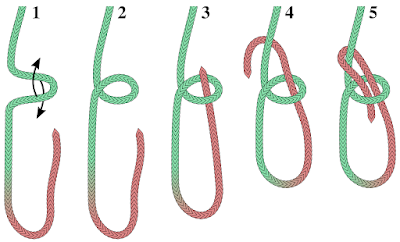Once again, I will credit my Lean/Six Sigma Green Belt Certification course for the inspiration for today's post. I don't know if the following story is true or not, but I thought the lesson at the end was important. I hope you think so too!
Apparently, the Pontiac Division of General Motors (note that the Pontiac brand was discontinued in 2010) once received the following customer complaint:
This is the second time I have written to you, and I don't blame you for not replying to me because I sounded crazy, but it is a fact that we have a tradition in our family of ice cream for dessert after dinner each night, but the kind of ice cream varies. I noticed that whenever I buy a vanilla ice cream when I return from the store, my car won't start. If I get any other flavor of ice cream, the car starts just fine. I want you to know I'm serious about this question, no matter how silly it sounds. I recently purchased a brand new Pontiac, and since then, my trips to the store have created a problem.
The customer admitted that he understood why the Customer Service Department didn't believe his story, but that he himself believed that his new car was allergic to vanilla ice cream or something like that. The Customer Service Department ignored the first complaint, but decided to investigate further after the second complaint. They sent an engineer to interview the family and check the car out further. The engineer thought that the whole story was nonsense, but he decided that he better do as he was told.
The engineer was surprised after meeting the customer, because he seemed like a well educated individual. She checked out the car and couldn't find anything wrong with it. However, because the man continued to plead with her, the engineer decided that she would approach the problem systematically, as she had been taught. She drove with the customer to the ice cream store and ordered vanilla ice cream. When they came out to the car, the car wouldn't start.
Now the engineer was intrigued! The man had been right after all. They returned at the same time on the next three nights, each time ordering a different flavor of ice cream. The car started fine when they ordered chocolate, strawberry, and even pistachio ice cream. However, on the fourth night, they again ordered vanilla ice cream and the car wouldn't start.
The engineer refused to believe that the car was allergic to vanilla ice cream. She had recorded every detail of the interaction over the course of the preceding five nights (vanilla-chocolate-strawberry-pistachio-vanilla), including the time of day, the amount of gas in the tank, the time it took to drive to and from the ice cream store (which included the time spent in the ice cream store). After analyzing her results further, she noticed an important clue! The man took significantly less time in the store when he purchased vanilla ice cream compared to the other flavors.
When the engineer investigated further, she learned that vanilla was the most popular flavor sold at that ice cream store, and the owner had placed all of the vanilla ice cream at the front of the store. All of the other flavors were sold at a separate counter at the back of the store. Also, the owner was trying to hire more ice cream servers, and because his shop was understaffed, it took more time to purchase all of the other flavors (the customers had to wait longer in line).
So, whenever the man bought vanilla ice cream, he spent only a few minutes in the store. Whenever he bought another flavor of ice cream, he spent about 5-10 minutes in the store. Knowing cars as well as she did, the engineer knew the answer to the problem. The car wasn't allergic to vanilla ice cream, the car was suffering from a problem known as "Vapor Lock".
Now I don't know anything about cars, but apparently "Vapor Lock" used to occur with older cars and was a problem caused by liquid fuel changing to a gaseous state while still in the fuel delivery system. This disrupted the operation of the fuel pump, causing loss of feed pressure to the carburetor or fuel injection system, resulting in transient loss of power or complete stalling (most newer engines have been designed to avoid this problem). The problem was more common in warmer temperatures and with newer cars.
When the man purchased vanilla ice cream for his family, his car developed "Vapor Lock". The car was still warm, and hence still susceptible to vapor lock. However, when he took longer to purchase the other flavors, there was sufficient time for the vapor lock to dissipate, so the engine would start normally.
Apparently this story was also told on the NPR talk show, "Car Talk". The lessons here for us are to (1) take all customer complaints seriously, no matter how weird they sound; (2) follow what High Reliability Organizations do by not oversimplifying a complex problem ("Reluctance to Simplify"); and (3) follow an analytic approach to solve complex problems.




